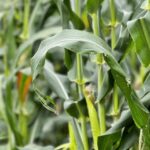Farm management software has become an essential tool for modern South African farmers, offering a digital solution to streamline operations, track expenses, monitor livestock, and improve overall productivity. However, as with any technology, there are common mistakes that can undermine its effectiveness. Many farmers struggle to make the most of these powerful tools due to errors in implementation, data management, or misuse of features. Here are 10 common mistakes South African farmers make when using farm management software—and how to avoid them.
1. Not Fully Understanding the Software’s Features
One of the most frequent mistakes is not understanding the full capabilities of the software. Many farmers purchase software based on basic features without fully exploring the advanced options it offers, such as crop yield prediction, soil health tracking, or financial reporting.
Solution: Before committing to any software, take time to thoroughly explore its capabilities. Invest in training for you and your team to maximize the software’s potential. Most software providers offer tutorials, webinars, or customer support to guide you.
2. Failing to Regularly Update the Software
Farm management software often releases updates that include important features, security patches, and bug fixes. Failing to update the software can leave your farm management processes vulnerable to inefficiencies or even security breaches.
Solution: Set up automatic updates or schedule regular checks to ensure your software is always up to date. Updates may improve functionality and protect you from potential issues.
3. Not Training Employees Properly
A major barrier to effective software use is inadequate training. If farm workers are unfamiliar with the software, they may input data incorrectly or fail to use the software to its full advantage.
Solution: Provide comprehensive training for all team members who will use the software. A thorough understanding of how the system works will improve data accuracy, efficiency, and communication across the farm.
4. Inputting Inaccurate or Inconsistent Data
The effectiveness of farm management software depends on the accuracy of the data entered. Many farmers make the mistake of inputting incorrect or inconsistent data, which can lead to misleading reports and ineffective decision-making.
Solution: Develop a standardized process for data entry and regularly audit the data for accuracy. Encourage employees to double-check data before submission to prevent errors from affecting analysis and decisions.
5. Not Integrating Software with Other Farm Systems
Farm management software is most effective when it is integrated with other systems on the farm, such as irrigation, inventory, and machinery monitoring. Failure to integrate these systems can lead to isolated data that doesn’t give a comprehensive picture of your farm’s operations.
Solution: Choose software that allows integration with your other farm management tools or invest in the necessary systems to ensure all data is centralized. Integration helps you gain insights across multiple areas of your farm and make more informed decisions.
6. Overcomplicating the Software Setup
In an attempt to capture every possible detail, farmers often overcomplicate the setup process, inputting too much unnecessary information or configuring the software in a way that doesn’t align with their actual needs.
Solution: Start with a simple setup that focuses on the key areas of your farming operation. Gradually add more features as you become more comfortable with the software. This ensures a smoother adoption process and reduces the risk of getting overwhelmed.
7. Not Utilizing Reporting and Analytics Features
Many farm management software programs offer robust reporting and analytics tools that can provide valuable insights into crop performance, financial trends, and resource utilization. Not utilizing these tools means missing out on valuable information that can drive efficiency and profitability.
Solution: Regularly generate reports to assess performance and identify areas for improvement. Use the software’s analytics tools to spot trends in production, labor, and resource use, which will help optimize your farm’s operations.
8. Failing to Back Up Your Data
Farm management software typically stores large amounts of critical data related to crop health, livestock, inventory, and financials. Failing to back up this data can result in devastating losses if the system crashes or data is corrupted.
Solution: Implement regular data backups, either through the software’s cloud-based system or external storage. Ensure backups are done automatically or on a set schedule to protect against data loss.
9. Ignoring Security Features
Cybersecurity is an often-overlooked aspect of farm management software. Farmers who don’t pay attention to security settings may expose sensitive data, such as financial information or crop data, to theft or misuse.
Solution: Utilize all available security features, such as strong passwords, two-factor authentication, and encryption. Ensure that access to the software is restricted to authorized personnel only, and regularly review security protocols.
10. Not Evaluating Software Performance
Once you’ve started using farm management software, it’s easy to fall into the habit of just “going with the flow.” However, not regularly evaluating its performance means you may miss opportunities for improvement or fail to identify areas where the software is not meeting your needs.
Solution: Periodically assess the software’s performance. Solicit feedback from employees on how it’s being used, and analyze whether the software is delivering the expected benefits in terms of efficiency, profitability, and ease of use. Don’t be afraid to switch to a different solution if the current one isn’t meeting your needs.
Farm management software can be a powerful tool for South African farmers looking to optimize their operations and increase profitability. However, to fully realize the benefits of this technology, it’s essential to avoid common mistakes such as failing to update software, inputting inaccurate data, or neglecting to train employees. By ensuring proper setup, training, data management, and security, farmers can leverage farm management software to make smarter decisions, increase efficiency, and scale their operations with ease. With the right approach, farm management software can be a game-changer for any agricultural business.
Join 'Farmers Mag' WhatsApp Channel
Get the latest Farming news and tips delivered straight to your WhatsApp
CLICK HERE TO JOIN






